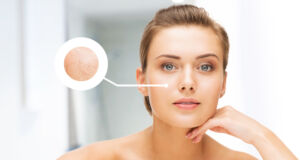Topical Treatments for Age Spots : Some people can see an improvement in age spots with a topical prescription. The two most widely prescribed topical treatments are hydroquinone (a prescription bleaching cream) or tretinoin (a prescription acne cream). However, patients should consult with an ASDS dermatologist since what works for one individual may not work for another.
What to expect after the procedure
Patients may have to apply topical treatments for several months before seeing results.
Preparing for the procedure
Before prescribing the medication, an ASDS dermatologist will usually review the patient’s medical history and conduct a physical exam. This is the time for the doctor and patient to discuss expectations, potential risks and outcomes of the treatment.
Why you should choose topical treatments for age spots
When used daily, topical solutions cause brown spots to fade over time.
Risks
As with any treatment, there are risks associated with it, though they are minimized in the hands of a qualified ASDS dermatologist. These include:
- Pain
- Swelling
- Bleeding
- Scarring
- Crusting
- Discoloration
- Infection
A bit of sun may give skin a youthful glow but, over time, too much can leave it looking old.
Photoaging (skin damage caused by the sun) not only contributes to fine lines, wrinkles, and leathery-looking skin, but also can cause uneven skin darkening that gives rise to age spots, or solar lentigines (len-TIH-gen-eez) — also called liver spots because of their brownish color. Solar lentigines occur occasionally in early adulthood, but mainly after age 40. More than 90% of white people over age 50 have at least one.
The upper layer of the skin (the epidermis) protects itself from the sun’s ultraviolet rays by thickening and producing more melanin, the pigment responsible for tanning. Age spots arise when melanin clumps together after years of sun damage, in much the same way that a callus develops in response to repeated contact and pressure. Solar lentigines (a single one is called a lentigo) are most common on sun-exposed areas of the body, including the backs of the hands and parts of the face, back, arms, legs, feet, and shoulders.
Even without years of sun exposure, some kinds of skin form the small brown spots that we call freckles. Age spots differ in that they do not typically fade when protected from sunlight and they are often larger in size. Several can mass together and form more noticeable mottled patches.
Age spots are harmless, but they can be unattractive and give skin an older appearance. At one time, the only remedy was to cover them up with cosmetics. Now, there are therapies that help reverse the signs of photoaging at the physiological level. One approach is physical removal — by laser surgery, cryosurgery (freezing), microdermabrasion, or chemical peel. Physical removal can be very effective, but it can be expensive and sometimes has harsh side effects, such as pain and reddening of the skin. Many women prefer to start with something gentler — topical medications that help fade age spots over time.
| Age spots or something else?
It’s important to distinguish age spots from other discolored, irregular lesions, such as actinic keratoses (dry, discolored patches that can develop into squamous cell skin cancer) and melanoma, the deadliest form of skin cancer. Be sure to see a dermatologist about any persistent skin lesion that is dark with irregular borders or colors, has raised areas, is itchy or painful, or has recently grown or otherwise changed in appearance. |
Sunscreen first
The first line of defense against age spots is a sunscreen with a sun protection factor (SPF) rating of 30 or higher. According to Dr. Mollie MacCormack, a dermatologist at Lahey Clinic in Burlington, Mass., the best sunscreens contain one of the following active ingredients: zinc oxide or titanium dioxide in a concentration of 9% or higher, ecamsule (Mexoryl), or helioplex (a proprietary formulation that includes both avobenzone and oxybenzone). These kinds of sunscreens, she says, “will give you long-lasting protection against UVA and UVB light,” the ranges of ultraviolet radiation wavelengths that damage skin. “Regular use of such broad-spectrum sunscreens will vastly increase the response to any prescription medication for photoaged skin.”

